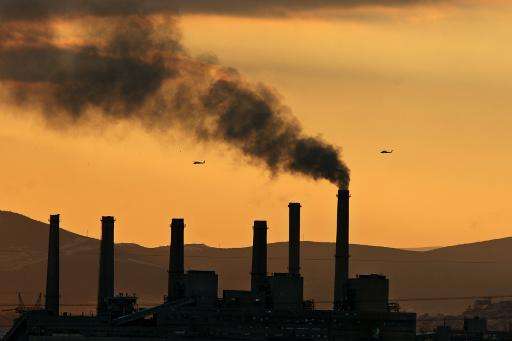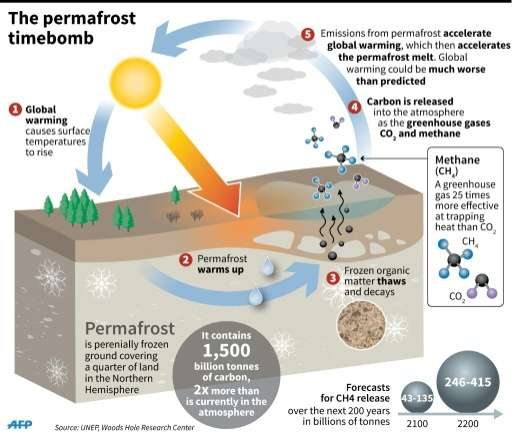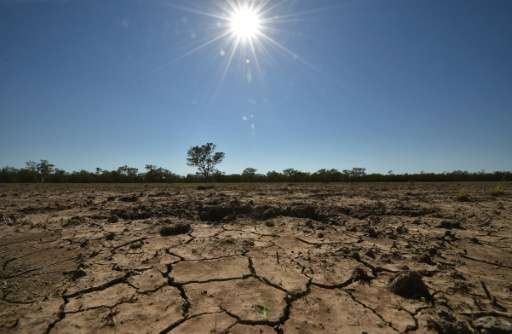The Climate Action Tracker, a tool developed by a group of research organisations, in September predicted the Earth was on track for average warming of 3 degrees Celsius by 2100
A total of 149 countries, representing 87 percent of the global population and 86 percent of climate-altering greenhouse gas (GHG) emissions, had submitted their carbon-curbing pledges to the UN by Thursday.
The most recent analysis of pledges by Climate Action Tracker (CAT), a tool developed by four research bodies, said the world was on course for average global warming of about 2.7 degrees Celsius (4.86 degrees Fahrenheit)—much higher than the UN's 2 C ceiling.
An overview of the Intended Nationally Determined Contributions (INDCs) of the world's top emitters:
1) China - 24 percent of global GHG emissions
Will hit peak carbon dioxide emissions by about 2030 and by the same year will cut CO2 emitted per unit of GDP by 60-65 percent from 2005 levels. The world's most populous nation will boost the share of non-fossil fuel in its primary energy consumption from 11.2 percent in 2014 to 20 percent, and increase the volume of CO2-absorbing forest stock by about 4.5 billion cubic metres.
2) United States - 15.5 percent of GHG
Has pledged a 26-28 percent reduction in emissions from 2005 levels by 2025. Power plants would cut carbon dioxide pollution by 32 percent from 2005 levels by 2030.
3) European Union - 10.8 percent of GHG
The 28-member bloc intends to cut greenhouse gas emissions by at least 40 percent by 2030 compared to 1990 levels, and push for 27 percent targets for renewable energy supply and efficiency gains.
Explanation of how permafrost thawing could radically accelerate global warming
4) India - 6.4 percent of GHG
Plans to reduce its carbon intensity by 35 percent by 2030 from 2005 levels, pledging also to generate 40 percent of its electricity from renewable sources within 15 years.
5) Russia - 4.9 percent of GHG
Has mooted a possible cut of 25-30 percent by 2030 from 1990 levels, conditional on the pledges of other "major emitters".
6) Japan - 2.9 percent of GHG
Has pledged a cut of 26 percent in emissions from 2013 levels by 2030, with nuclear energy—offline since the 2011 Fukushima disaster—providing 20-22 percent of electricity by then. Renewable electricity production, including hydro power, would be expanded to 22-24 percent of the total from 11 percent for the year to March 2014.
7) Brazil - Two percent of GHG
With 2005 as a baseline, Brazil has pledged to cut greenhouse gas emissions 37 percent by 2025, and 43 percent by 2030. The country would recover degraded pastures and make available five million hectares (12 million acres) of "integrated crop-livestock-forest area."
Scientists warn that if global warming is not limited to an average two degrees Celsius ever-more violent storms, droughts and sea-level rises will bring catastrophe
8) Iran - 1.6 percent of GHG
No pledge to date
9) Indonesia - 1.6 percent of GHG
Indonesia has pledged to cut greenhouse gas emissions by 29 percent by 2030 compared to a "business-as-usual" scenario, by boosting forest protection and renewable energy. With financial and other help, the pledge can be raised to 41 percent.
10) Canada - 1.5 percent of GHG
Canada will seek to reduce emissions by 30 percent from 2005 levels by 2030.
Sources: Country pledges submitted to the UN Framework Convention on Climate Change (UNFCCC), Climate Action Tracker, Climate Analytics
© 2015 AFP

























